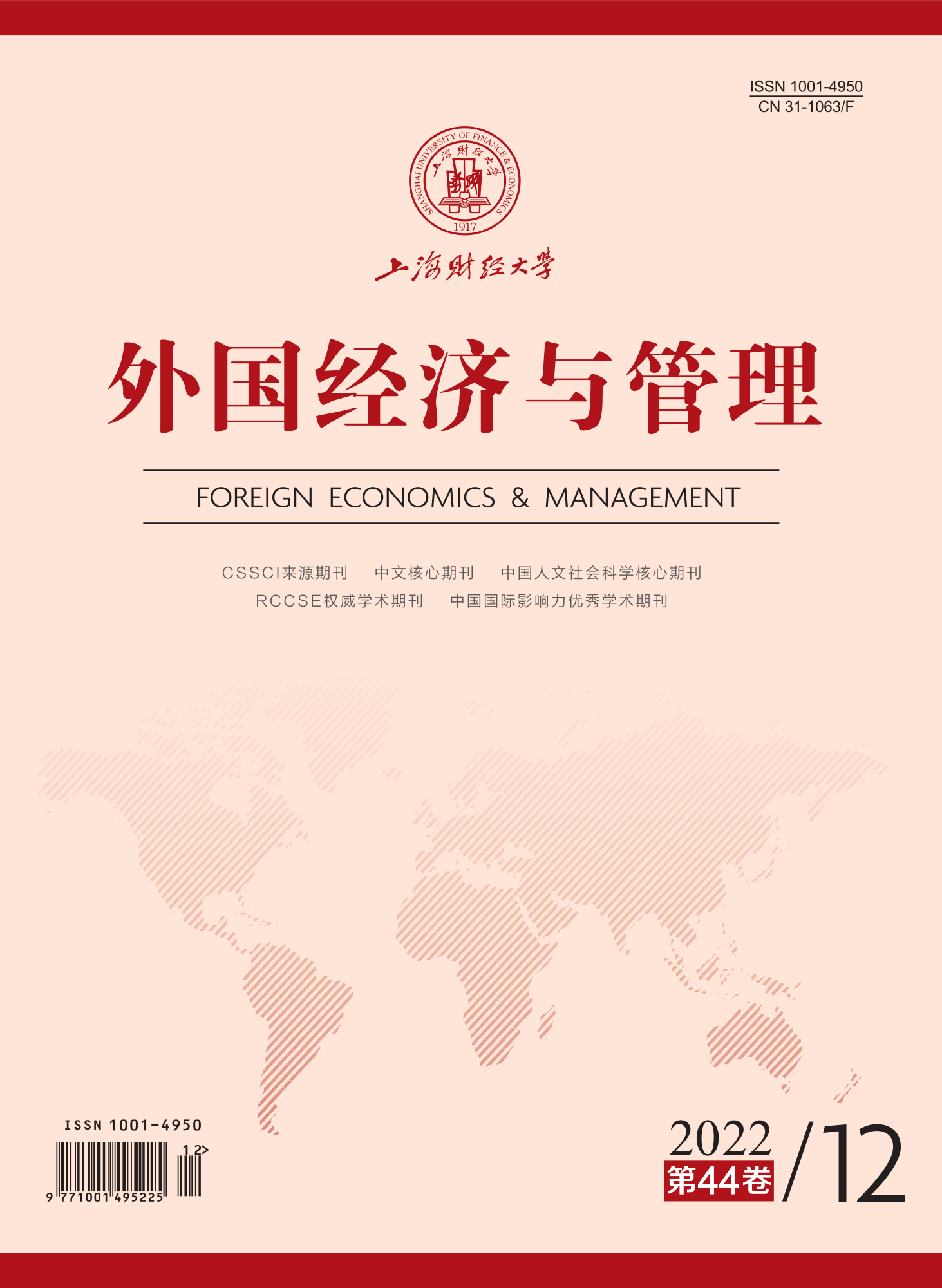乡村振兴呼唤人才,农户异地创业浪潮随之高涨。但农户异地创业及其流向的驱动因素及其作用机制尚未得到重视,更少有研究结合家庭结构因素进行讨论。本文基于2016年上海财经大学在全国范围内展开的“千村调查”和2016年中国城市统计年鉴,从家庭内部社会化特征和家庭资本角度出发,结合农户异地创业特征及障碍,考察创业者原生家庭规模对异地创业、创业流向影响,以及个体人力资本和企业所属产业类型在上述关系间所起到的调节作用,以期为各地突围“抢人”大战,实现创新发展和产业升级产生积极作用。研究结果表明:(1)农户创业者的原生家庭规模越大,越容易采取异地创业行为;(2)并且倾向去往与原生地经济发展距离较大的地区;(3)创业者的个体人力资本放大了家庭规模与异地创业、经济发展距离的正效应;当企业属于第三产业时,家庭规模与异地创业的正效应更强。研究通过将家庭科学与创业研究结合起来,凸显了家庭规模对创业选择的重要作用,并为乡村地区制定“引人”和“留人”政策,尤其是针对相对落后地区发挥产业和项目集聚能力提供借鉴。
“聚天下英才而用之”:如何促进“外乡人”入村创业?——基于家庭规模的视角
摘要
参考文献
2 郭云南, 王春飞. 第一大姓当选是否会促进创业?[J]. 经济学(季刊),2020, 19(4): 1355-1374. DOI:10.13821/j.cnki.ceq.2020.03.10
4 罗顺均, 安雯雯, 叶文平. 什么样的异地创业更具投资吸引力——基于模糊集定性比较分析(fsQCA)的研究方法[J]. 南开管理评论,2020, 23(4): 166-177. DOI:10.3969/j.issn.1008-3448.2020.04.016
7 叶文平, 李新春, 朱沆. 地区差距、社会嵌入与异地创业——“过江龙”企业家现象研究[J]. 管理世界,2018, 34(1): 139-156. DOI:10.3969/j.issn.1002-5502.2018.01.012
10 Bird M, Wennberg K. Why family matters: The impact of family resources on immigrant entrepreneurs' exit from entrepreneurship[J]. Journal of Business Venturing,2016, 31(6): 687-704. DOI:10.1016/j.jbusvent.2016.09.002
11 Cameron L, Erkal N, Gangadharan L, et al. Little emperors: Behavioral impacts of China's One-Child Policy[J]. Science,2013, 339(6122): 953-957. DOI:10.1126/science.1230221
12 Campbell R J, Jeong S H, Graffin S D. Born to take risk? The effect of CEO birth order on strategic risk taking[J]. Academy of Management Journal,2019, 62(4): 1278-1306. DOI:10.5465/amj.2017.0790
13 Dabić M, Vlačić B, Paul J, et al. Immigrant entrepreneurship: A review and research agenda[J]. Journal of Business Research,2020, 113: 25-38. DOI:10.1016/j.jbusres.2020.03.013
14 Dana L P, Gurau C, Light I, et al. Family, community, and ethnic capital as entrepreneurial resources: Toward an integrated model[J]. Journal of Small Business Management,2020, 58(5): 1003-1029. DOI:10.1111/jsbm.12507
15 Delery J E, Roumpi D. Strategic human resource management, human capital and competitive advantage: Is the field going in circles?[J]. Human Resource Management Journal,2017, 27(1): 1-21. DOI:10.1111/1748-8583.12137
16 Fatoki O, Patswawairi T. The motivations and obstacles to immigrant entrepreneurship in South Africa[J]. Journal of Social Sciences,2012, 32(2): 133-142. DOI:10.1080/09718923.2012.11893059
17 Jaskiewicz P, Combs J G, Shanine K K, et al. Introducing the family: A review of family science with implications for management research[J]. Academy of Management Annals,2017, 11(1): 309-341. DOI:10.5465/annals.2014.0053
18 Li L X, Wu X Y. Number of siblings, credit constraints, and entrepreneurship in China[J]. The Journal of Development Studies,2018, 54(7): 1253-1273. DOI:10.1080/00220388.2017.1324147
19 Marvel M R, Davis J L, Sproul C R. Human capital and entrepreneurship research: A critical review and future directions[J]. Entrepreneurship Theory and Practice,2016, 40(3): 599-626. DOI:10.1111/etap.12136
22 Ndofor H A, Priem R L. Immigrant entrepreneurs, the ethnic enclave strategy, and venture performance[J]. Journal of Management,2011, 37(3): 790-818. DOI:10.1177/0149206309345020
23 Sahin M, Nijkamp P, Stough R. Impact of urban conditions on firm performance of migrant entrepreneurs: A comparative Dutch-US study[J]. The Annals of Regional Science,2011, 46(3): 661-689. DOI:10.1007/s00168-009-0351-2
24 Siqueira A C O, Webb J W, Bruton G D. Informal entrepreneurship and industry conditions[J]. Entrepreneurship Theory and Practice,2016, 40(1): 177-200. DOI:10.1111/etap.12115
25 Unger J M, Rauch A, Frese M, et al. Human capital and entrepreneurial success: A meta-analytical review[J]. Journal of Business Venturing,2011, 26(3): 341-358. DOI:10.1016/j.jbusvent.2009.09.004
26 Vladasel T, Lindquist M J, Sol J, et al. On the origins of entrepreneurship: Evidence from sibling correlations[J]. Journal of Business Venturing,2021, 36(5): 106017. DOI:10.1016/j.jbusvent.2020.106017
27 Vladasel T L. Birth Order, family size, and sibling sex composition effects in entrepreneurship[J]. Academy of Management Proceedings,2019, 2019(1): 11723. DOI:10.5465/AMBPP.2019.11723abstract
28 Zellweger T M, Kellermanns F W, Eddleston K A, et al. Building a family firm image: How family firms capitalize on their family ties[J]. Journal of Family Business Strategy,2012, 3(4): 239-250. DOI:10.1016/j.jfbs.2012.10.001
29 Zhou W B. Institutional environment, public-private hybrid forms, and entrepreneurial reinvestment in a transition economy[J]. Journal of Business Venturing,2017, 32(2): 197-214. DOI:10.1016/j.jbusvent.2016.11.002
引用本文
张茜, 蔺楠. “聚天下英才而用之”:如何促进“外乡人”入村创业?——基于家庭规模的视角[J]. 外国经济与管理, 2022, 44(12): 87-102.
导出参考文献,格式为:





 9184
9184  5219
5219

